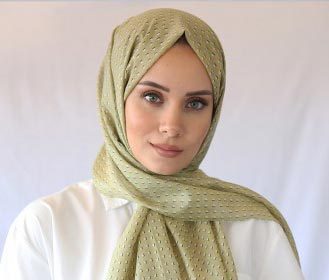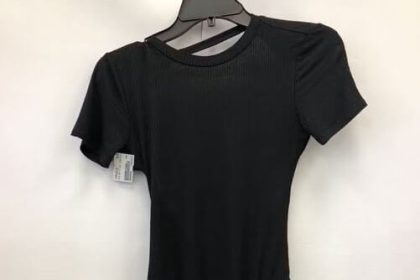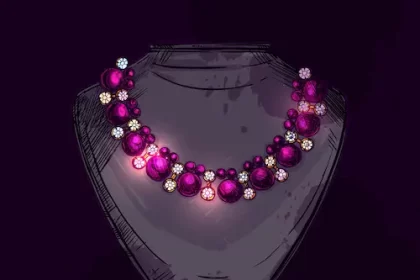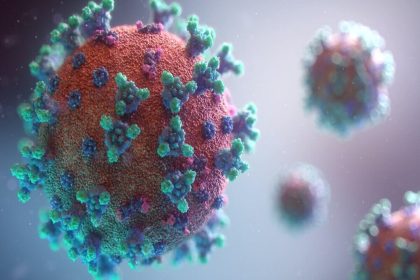Jersey fabric is a soft and elastic fabric that has many types and is widely used. It also has many fans all over the world. In this article from Monomad, we tried to prepare a comprehensive and complete guide about jersey fabric for you. Stay with us.
What is jersey fabric?
Jersey is a type of knitted fabric that is made from different natural and synthetic fibers and has high elasticity. This fabric is very popular due to its softness and lightness, and it is widely used in clothes that are in direct contact with the skin. Jersey fabric is available in different types and colors, but before examining them, it is better to have a look at the history of this fabric.
What is the history of jersey fabric?
Originating from the Middle Ages
According to sources, jersey fabric has been around since the Middle Ages, and then its reputation spread throughout Western Europe. But if we want to check more closely, it belongs to the end of the 16th century. When the invention of the loom brought about a revolution in the textile industry. William Lee, an Anglican priest, was able to invent a mechanical knitting machine by carefully moving the fingers of some traditional style weavers, and it was probably after that that jersey fabric and other knitted fabrics reached the stage of machine production.
English Channel

The origin of jersey fabric is associated with the Channel Islands; The English Channel Islands are a collection of small islands located in the English Channel, which have been exchanged between different countries since the Middle Ages. Although these islands are under British protection, they still do not officially belong to its territory. Also, the interesting point about the Channel Islands is that the largest island is called Jersey. Where the name jersey fabric is borrowed from. But since jersey fabric was produced for the first time by the people of this island, this fabric is called jersey. Although jersey fans claim the fabric is British, we still can’t be sure. But we have no doubt that over time, England was the main exporter of this cloth.
At the beginning, jersey fabric was not used much for daily use and was mostly known for being the main fabric for the production of sportswear; But eventually it reached the field of men’s underwear or work clothes. By the middle of the 18th century, all the people of Europe were familiar with jersey fabric. However, until 1820, this fabric was still not used for sewing daily clothes.
Coco Chanel’s influential action in 1916

This routine continued for decades and years until in 1916, Coco Chanel marked a major turning point in the history of this fabric by designing a collection of daily wear from jersey fabrics. To such an extent that he received a great reception from the people and other designers started imitating him, and this is how jersey fabric became one of the most widely used fibers for the production of everyday clothes.
The place of jersey fabric in today’s life
For many years, this fabric has the title of international superstar and it is used in sewing all kinds of clothes such as evening dresses, evening dresses and even casual styles like t-shirts. It may not be believable but jersey t-shirts are the most popular clothes of this fabric in the world and people always have it in their wardrobe because of its softness and coolness.
Note: Although the main fiber of jersey fabric is wool, today it is possible to use synthetic fibers in its production.
What are the six important features of jersey fabric?

1. It has an elastic state
According to the structure of woven fabrics, since jersey is also a woven fabric, it has an elastic state. When the fabric is jersey, it is easy to move.
2. it is soft
Different types of jersey fabric are very soft. When you touch it, you will feel its softness.
3. It is opaque
Jersey has a matte state due to its texture, but the way it is woven is such that there is no space between the fibers and therefore light cannot pass through it.
4. It is breathable and absorbent
These two features are basically related to cotton thread. Since cotton thread is used in jersey fabric, it has high absorbency and breathability.
5. It is highly structured
Most jersey fabrics have a beautiful finish that is associated with the fabric fibers. For example, fabrics made from viscose or silk fibers are smoother and more beautiful compared to cotton fibers.
6. It is durable
Since jersey fabric is a durable fabric, it is difficult to tear. We can also wash these different types of this fabric many times with a washing machine.
Note: When the jersey fabric is wet, it is wrinkled, but it returns to its original shape as soon as it dries. It is also highly resistant to the heat of the iron, but it is better not to use an iron to dry the jersey.
How is the production of jersey fabric?

The production process of different types of this fabric is significantly different due to the use of different fibers. For example, to produce one type of jersey fabric, sheep wool is used for another type of goat wool, and other animal species are used for other types. Plant fibers such as cotton or synthetic fibers may also be used in the production process of jersey fabric. But in general, with any fiber that is produced, it follows a universal pattern. In the past, jersey fabric was woven by hand, which was very laborious. But with the passage of time and the development of knitting machines, nowadays its production is done by machine.
What are the production steps of jersey fabric?
First, cotton yarn, natural or synthetic wool are loaded in the knitting machine, and then it is time to tie the knot. So that the knitting machine finally produces the jersey fabric by twisting the threads and making small loops. In some cases, the yarns intended for production are dyed before the weaving process. But on the other hand, some factories may do the dyeing process after finishing the fabric production process.
Types of jersey fabric in terms of categories
Different types of jersey fabric allow us to have freedom of choice when choosing clothes for different events. But in general, jersey fabric has four general categories:
1. Cotton jersey fabrics

This category is produced from cotton fibers or a mixture of vegetable fibers. They are also soft and slightly heavy. Cotton jersey is commonly used for children’s t-shirts because it is breathable and suitable for children’s skin. Of course, adults also use this fabric for clothes such as trousers, blazers and straight skirts. The last point is that cotton jerseys are more elastic and return to their original shape after wearing
2. Silk jersey fabrics

This type of jersey fabric has a high luster and is very soft to the touch and we can wear them for long hours. Unlike cotton fabrics, which are naturally opaque, silk jerseys are usually transparent and are therefore suitable for use in a variety of formal situations.
3. Wool jersey fabrics

Wool jerseys are relatively heavy in terms of weight, which makes them suitable for use in autumn and winter. Woolen jerseys are also soft and insulated against the cold due to their constituent fibers. They are also expensive.
4. Rayon or viscose jersey fabrics

We can use this fabric to sew beautiful dresses. Also, use it for summer clothes such as tops, blazers, skirts and beach dresses. Rayon jersey is lighter in weight than other types, and because it does not wrinkle, it is an excellent choice for sewing suits.
General types of jersey fabric
1. Single jersey

The weight of this type of jersey fabric is less than 140 grams per square meter. One side is smooth and the other side has bristles. Basically, only one side of the fabric is knitted. Also, this type of jersey, which is produced from cotton or viscose, has more elasticity than polyester fabrics.
2. Interlock jersey

Because the folded sides of the fabric are connected, this type of fabric is also called jersey de la. Both sides of the interwoven jersey are smooth, and since it is twice as thick as single-layer jersey, it is both more durable and more insulating.
3. Jacquard jersey

Like other jacquard fabrics, jacquard jersey also has designs that are categorized into simple and complex. Textile manufacturers use industrial knitting machines to make patterns for these designs.
4. Blister jersey (Clocqué jersey)

Cloque means blister in French. This fabric is named Cloak because it has a convex shape. Manufacturers create this bump on the fabric with looms.
5. Stretch jersey

As the name suggests, this fabric has a stretchy state and is produced from wool, polyester or other fibers that have an elastic state.
6. Slub jersey

Since this type of jersey is produced with half-weave yarns, it is called half-weave jersey or slab. In other words, semi-weave jersey fabric is the result of the disordered twisting process of the fibers in the production process.
Jersey fabric is produced in which countries?
As we mentioned in the history, in the 1800s, England was the largest producer of jersey fabric. But today, China is the largest textile producer and the largest exporter of cotton and synthetic textiles, and next to that, Australia is the largest exporter of animal and natural wool textiles for the production of all kinds of fabrics. So much so that it is called the capital of wool production in the world.
Jersey fabric is suitable for use in which clothes?
Today, this fabric is one of the most widely used fabrics for sewing all kinds of clothes, and we will examine several important items together:
Although Coco Chanel introduced a new use of jersey fabric many years ago by producing its official clothing collection, today textile manufacturers mainly use jersey fabric to produce casual clothes such as t-shirts and underwear. Of course, due to the existence of different types of this fabric, we can also consider other important uses for it. For example, shirts, dresses and sports uniforms. It is also better to pay attention to the fact that the use of jersey fabric is not limited to clothes and is also used in the production of bedding, pillowcases and even blankets.
1. T-shirts and undershirts
Most t-shirts are made from woolen fabrics such as jersey. Because these fabrics are elastic, one feels comfortable while wearing them.
2. Sweatshirt and sweatpants
These kinds of clothes are always suitable when walking or having fun related to nature, and therefore the material of this range of clothes is made of jersey fabric.
3. sports clothes
As we said, jersey fabric is suitable for sports activities due to its features. But we must keep in mind that team sportswear is not made of pure jersey and other materials are also used for their production.
What effect does the production of jersey fabric have on the environment?

In the production process of polyester and artificial silk, toxic chemicals are used that have a significant negative impact on the environment; Therefore, the environmental impact of jersey fabric is different according to the types of its fibers. For example, if jersey is produced with synthetic fibers, it has a negative impact on the weather. In this way, synthetic fibers introduce their toxic substances into the water during each wash, and if the cycle repeats, this pollution remains in the environment. On the other hand, even the production of natural wool and cotton, if done with toxic chemical products, still harms the environment. Of course, we should also pay attention to the fact that cotton cultivation is also possible in agriculture without the use of toxic chemicals.
Important note: Natural fibers are degradable unlike synthetic fibers.
What are the care methods of jersey fabric?

If you have never used jersey fabric, it is better to pay attention to the following points so that you can take good care of your clothes.
Be careful in choosing your fabric
This is the first step to sewing clothes with different types of jersey fabric. Be careful in choosing it. For example, keep in mind that sewing on viscose fabric, which is more stretchy, can be difficult for beginning seamstresses, and the result may not be to your liking the first time. Also, it is better to be careful about the position and type of your clothes in choosing the type and material of jersey fabric.
Wash the fabric before sewing
Since cotton, cotton and viscose jersey fabrics are prone to shrinkage, it is better to wash the fabric before sewing. Because after that you won’t worry about your clothes shrinking.
Use ballpoint needles to sew fabric
Due to the fact that the tips are round, ball needles prevent the tearing of clothing fibers, and for this reason, they are suitable for sewing different types of jersey fabrics.
Use a sewing machine table with a stand
When you use this table, both layers of fabric are moved at the same time for sewing, and this action prevents the fabric from stretching too much.
Use a zigzag stitch
Straight stitches are not very suitable for jersey fabrics, because they do not allow the seam of the fabric to stretch along with it, and eventually cause the fabric to tear. Zigzag stitching prevents this from happening.
What are the care methods for clothes made with jersey fabric?

After sewing your clothes, you still need to take care of your clothes, which includes the following:
- It is better to wash your clothes with cold water, either by hand or by washing machine. Because this will prevent the fabric of your clothes from gathering.
- Wash your clothes with mild detergent so that strong chemicals do not negatively affect the material and quality of your fabric.
- To dry your clothes, you need to be sensitive to the temperature of the type of fabric. For example, low heat is suitable for cotton jersey and medium heat is suitable for synthetic fiber jersey. Note that the use of high temperature is not suitable for any type of jersey fabric.
Checking the price of jersey fabric
The price of this fabric depends on the fibers used to produce the fabric. For example, among all raw materials, polyester is the cheapest. Of course, the price of fabrics that are produced with plant fibers such as cotton is somewhat like the price of polyester. On the other hand, woolen jersey is more expensive than other types of fabric due to its production process and high quality. But in general, because the texture of this fabric is simple, it is not included in the category of very expensive knitted fabrics, and often the price of all its types is affordable.
last word
As we said, jersey fabric is a popular and popular fabric that is a good choice for both formal and casual occasions. Because there are different types of jersey, a detailed examination of the characteristics of its types can help you make a decision and make the right choice. If you also know something about this, please share it with us in the comments section.
RCO NEWS

















